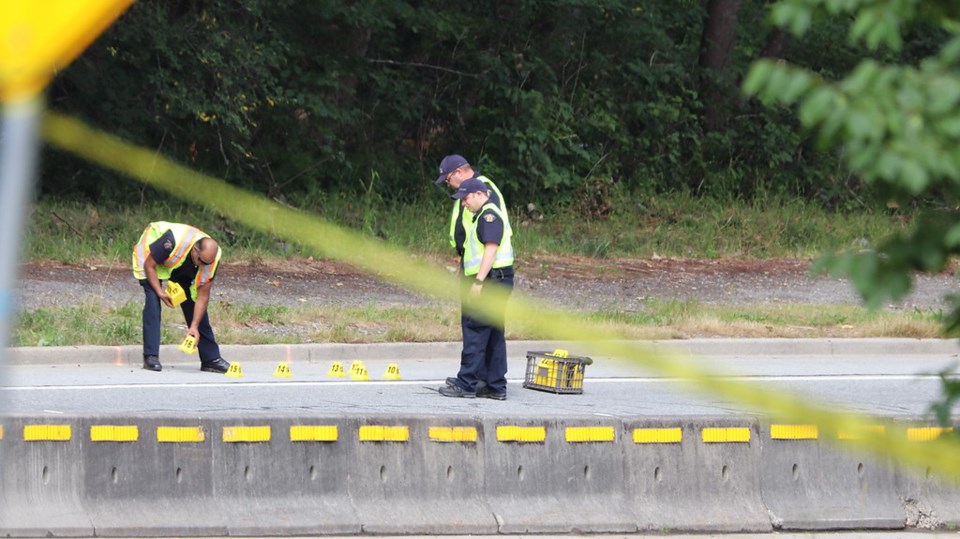Editor:
I attended the Sept. 4 meeting of the Burnaby Traffic Safety Committee to listen to a presentation by Moreno Zanotto on the desirability of giving cyclists protected bike lanes at Burnaby town centre intersections.
In the current town centre design, protected bike lanes vanish at intersections and cyclists enter the adjacent vehicle lane. This design puts cyclists into a potential conflict with right-turning vehicles at the same time that the cyclist is watching for pedestrians.
The design presented by Zanotto extends the separated bike lane around the corner so that cyclists are protected from vehicles and need only watch for pedestrians. This design is in use in Europe and could be incorporated into the existing town centre design with minimal change (and cost) and minimal impact on motorists and pedestrians.
The response by the Burnaby planning representative was to suggest the concept is unproven and to ask Zanotto if statistics were available to compare the protected intersection design with intersections similar to the current town centre design. Of course there are no such statistics available, so the implication is that the protected intersection design will not be seriously considered.
Another presentation was given by local residents on the need for a crosswalk and pedestrian-activated light at the intersection of Gilley and Portland. The Burnaby engineering representative stated that the existing traffic statistics for that intersection did not support such an expenditure. On questioning, it turned out that the statistics dated from 2016 while residents feel that vehicle traffic along Gilley has increased significantly due to the Market Crossing development. I think the action will be to perform a new survey of this intersection.
A letter had also been received regarding the unsafe bicycle infrastructure at Underhill and Lougheed. I lost the thread of the minimal discussion but it appeared no action was to be taken.
The recent fatality of cyclist Charles Masala on Gaglardi Way was then mentioned as demonstrating a need for separated bike lanes. The Burnaby engineering representative commented that there had been “only one” cyclist fatality along Gaglardi Way. Separated bike lanes were therefore unneeded and too expensive. Burnaby engineering was, however, considering repainting the bike lane markings on the road. Also considered too expensive was painting cyclist and pedestrian zones with green paint - although it was being “looked into.”
The reaction to the Gaglardi Way fatality and to the proposal for protected bike lanes at intersections is distressingly similar to the initial reaction to the January 2017 death of pedestrian Fernanda Girotto at a marked crosswalk on Cariboo Road. The statistics at that intersection were initially claimed not to support the expenditure for a traffic light or pedestrian-activated light at that crosswalk. This despite the fact that the fatality was one of three crashes at that crosswalk over a four-day period – two involving pedestrians and one a cyclist and the fact that local residents had been asking for a signal for some time.
I am a pedestrian, a driver and a cyclist. There is one fact that is clear – pedestrians and cyclists are the losers in any conflict with a motor vehicle and the result is all-too-often serious injury or death. It does not require profound engineering judgment to realize the ideal infrastructure should separate these three transport modes because they are clearly incompatible in terms of speed.
In Burnaby, protection and convenience of cyclists has the lowest priority of the three transport modes.
One test is worth a thousand “expert” opinions (and even more “statistics”). So, rather than waiting for someone somewhere to generate “statistics,” or worse an accident, the protected intersection design could be installed at a town centre intersection which already has one corner with the current design (Lougheed and Willingdon for example). Then the performance of the two design concepts could be assessed on a rational basis – i.e. same human behaviour of drivers, pedestrians, and cyclists.
The glacial pace of town centre intersection construction would allow ample time to evaluate the two designs. If the protected intersection was found to be superior then the cost of adopting the protected design would not likely wobble Burnaby’s billion-dollar-plus bank balance. Another target ought to be Burnaby’s shared paths, which incorporate cyclist/vehicle conflict points at intersections and cyclist/pedestrian conflict potential throughout.
Craig Reid, Burnaby



